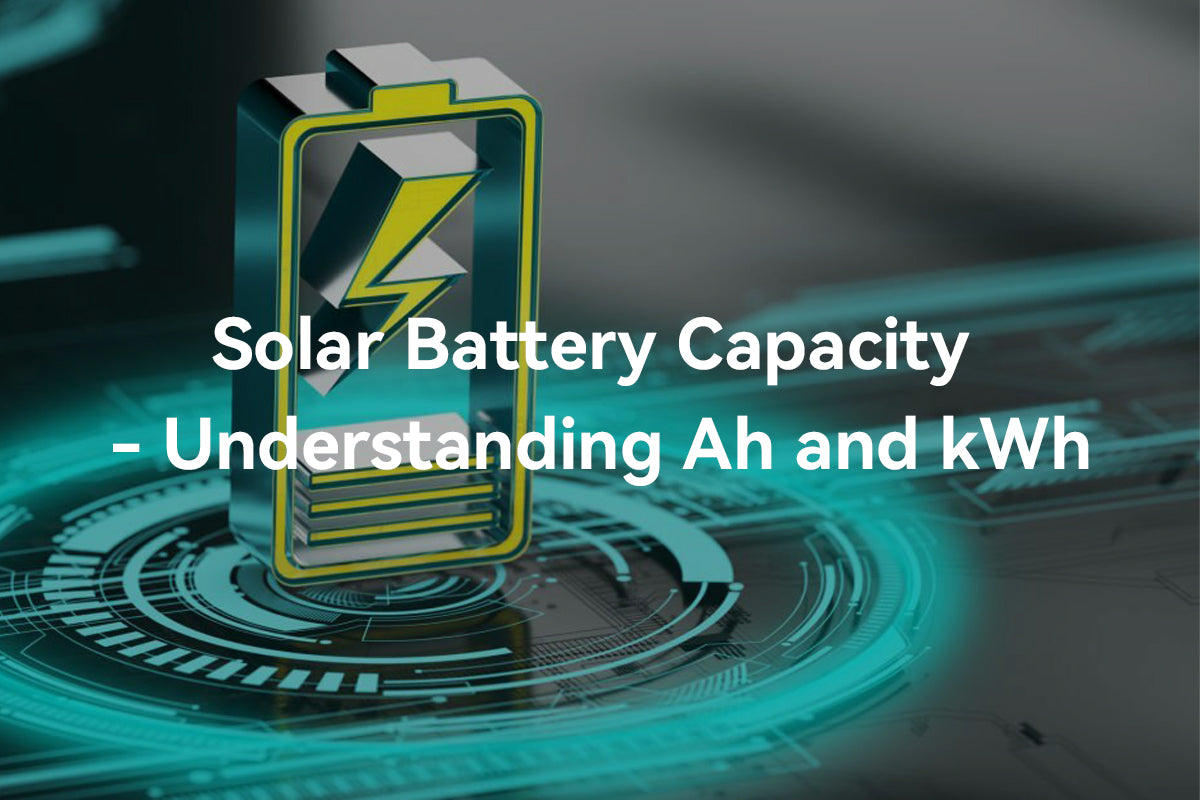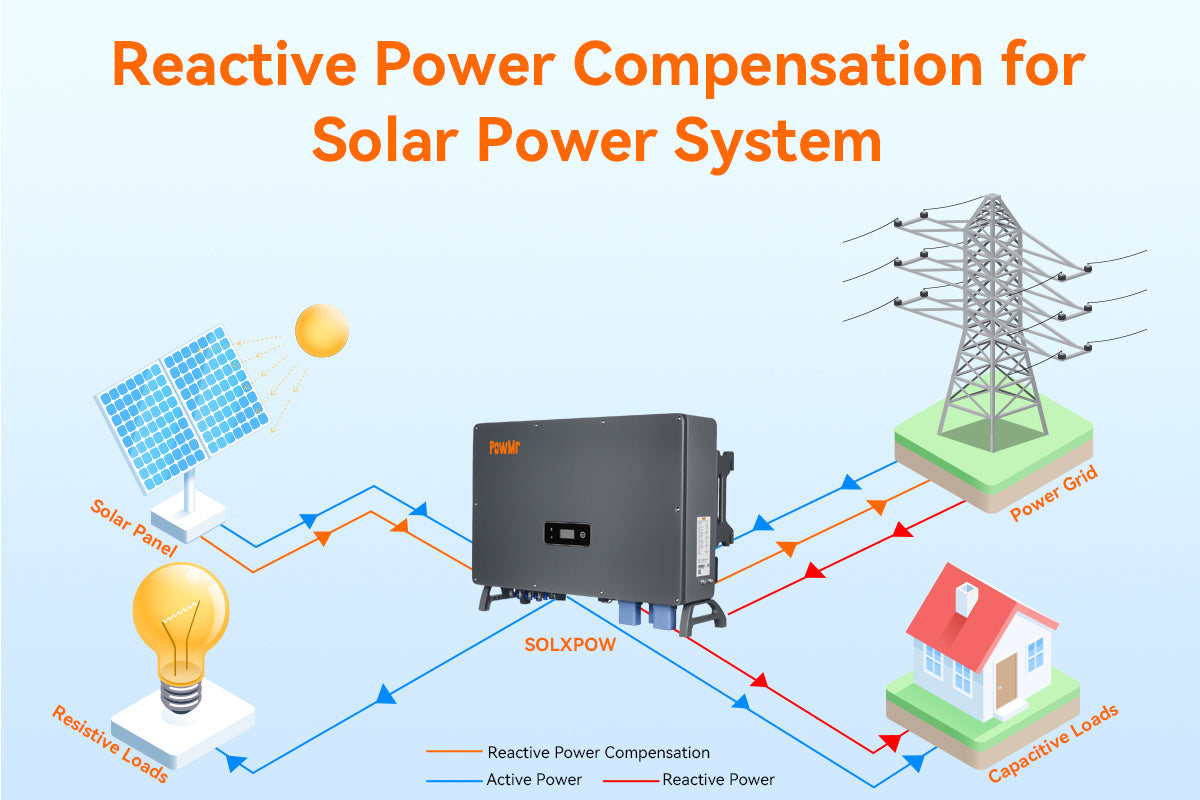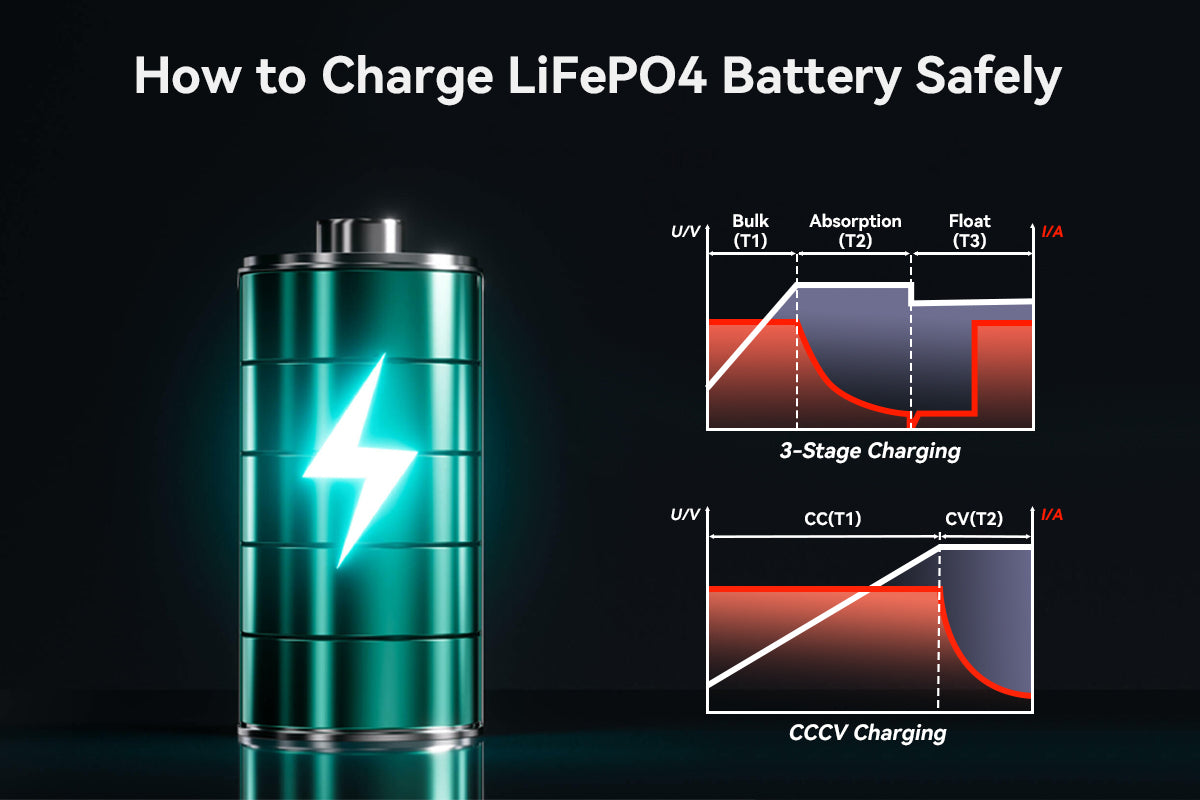The global shift towards sustainable energy sources is more evident than ever, with solar power leading the charge. Solar panels convert sunlight into electricity, but the challenge lies in storing this energy for use during periods of low sunlight. This is where solar batteries play a pivotal role, acting as reservoirs that store and release energy as needed.
As you selecte a battery for your solar power system, you've likely come across abbreviations such as Ah and kWh. The question that often crosses your mind is, "What exactly does Ah mean?"
In this article, we will unravel the mysteries behind the units Ah and kWh, exploring their significance in the realm of solar energy storage and explaining how to convert Ah to kWh, making it easier for you to determine how many batteries you need based on your electricity bill.
What Does Ah Mean on Battery?
Ampere-hour (Ah) is the unit of electrical charge commonly used to describe the energy storage capacity of a battery. One ampere-hour is equivalent to the amount of charge transferred by a current of one ampere over the course of one hour. The Ah capacity of a battery indicates how long it can sustain a current of a certain amperage.
Different types of batteries, such as lead-acid batteries and lifepo4 batteries, possess varying energy densities and electrochemical properties, resulting in different Ah capacities. The higher the Ah rating, the more energy the battery can provide. This is particularly important in off-grid solar systems where a reliable and substantial energy reserve is essential.
What Does kWh Mean on Battery?
A kilowatt-hour (kWh) is a unit of energy used to quantify the amount of electricity consumed or produced at a rate of one kilowatt (unit of power) per hour. In the context of solar batteries, kWh is employed to measure the overall energy capacity of the battery, providing a broader perspective on its capabilities.
In simple terms, a kilowatt-hour is a measure of energy, describing how much electrical energy is consumed or generated in one hour at a rate of one kilowatt. On the other hand, ampere-hour (Ah) is a measure of electric charge, representing the quantity of electricity flowing through a circuit in one hour. The relationship between them depends on voltage, as power equals current multiplied by voltage.
How to convert Ah to kWh
The relationship between Ah and kWh is fundamental to gauging the efficiency and longevity of a solar battery. Ah is a measure of current, and kWh is a measure of power over time. The conversion between these units involves multiplying the voltage by the Ah rating and dividing by 1000.
Formula to Converte Ah to kWh
kWh= Ah*Volts/1000
Wh = Ah*Volt
To illustrate, let's consider a 51.2V battery with a capacity of 100Ah:
- kWh = 100 * 51.2V/1000= 5.12 kWh
This conversion is essential for accurately assessing the energy storage potential of a solar battery.
To help visualize the energy capacity of different solar batteries, we've compiled a table that converts Ah to kWh across various Ah capacities for 12V, 24V, and 48V battery systems.
| AH | kWH at 12V | kWH at 24V | kWH at 48V |
|---|---|---|---|
| 100Ah | 1.2kwh | 2.4kwh | 4.8kwh |
| 150Ah | 1.8kwh | 3.6kwh | 7.2kwh |
| 200Ah | 2.4kwh | 4.8kwh | 9.6kwh |
| 280Ah | 3.36kwh | 6.72kwh | 13.44kwh |
| 300Ah | 3.6kwh | 7.2kwh | 14.4kwh |
| 400Ah | 4.8kwh | 9.6kwh | 19.2kwh |
Can I mix Different Ah Batteries in Series or Parallel
Connecting batteries in series or parallel offers flexibility in adjusting the voltage or capacity of a battery system to meet different requirements. However, it's crucial that the batteries have the same specifications, meaning equal voltage and capacity.
It's never advisable to mix batteries with different Ah ratings in parallel or series configurations.
When mixing batteries with different capacities (Ah) in series or parallel, the most common issue is that some batteries charge faster than others. Once the faster-charging batteries are fully charged, the charger stops, leaving the slower-charging batteries undercharged.
Especially in battery groups with different Ah connected in parallel, this voltage differences between the batteries cause the one with the highest voltage to charge the one with the lowest voltage, attempting to establish a balance within the system.
To cater to various needs, PowMr offers a convenient stackable design for batteries that is easy to install, space-efficient, and aesthetically pleasing.
For an expandable Ah capacity battery system, the POW-LIO51400-16S 51.2V Stackable LiFePO4 Battery allows you to stack up to

For high-voltage energy storage, the POW-HVB-10 high voltage battery storage modules each provide 50Ah. When connected in series,the Ah remains the same, but these modules can boost the voltage from 204.8V (10kWh with 2 modules) to a maximum of 512V (20kWh with 5 modules).

Both solutions come with a built-in Battery Management System (BMS), ensuring optimal performance, longevity, and safety, giving you peace of mind in your solar energy investment.



